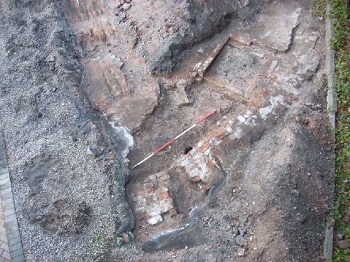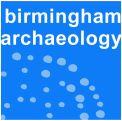Coalbournhill Glassworks, Amblecote, Dudley MBC. Archaeological Desk-Based Assessment and Evaluation
Birmingham Archaeology, 2017. https://doi.org/10.5284/1046262. How to cite using this DOI
Data copyright © University of Birmingham, Birmingham Archaeology unless otherwise stated
This work is licensed under the ADS Terms of Use and Access.
Primary contact
Historic England
1 Waterhouse Square
138-142 Holborn
London
EC1N 2ST
UK
Tel: 01793 414700
Fax: 01793 414707
Resource identifiers
- ADS Collection: 2932
- DOI:https://doi.org/10.5284/1046262
- How to cite using this DOI
Introduction

An archaeological desk-based assessment and evaluation were undertaken for the Ruskin Mill Educational Trust at the Glassworks College, Amblecote, Stourbridge, centred on NGR SO 8968 8547. The assessment comprised a search of the readily accessible documentary and historic cartographic sources and a site walkover. The evaluation was carried out to determine the character, extent, date, state of preservation and the potential significance of any buried remains, specifically the former glasscone and ancillary structures towards the east of the site. The work was carried out in support of an application for funding to restructure the College site.
The desk-based assessment identified three zones of archaeological survival within the development site. Zone 1, which occupies the northwest corner of the site is the location of the former Coalbournbrook glassworks, which was established in the late 17th century, and which continued to produce glass until 1785. Zone 2, which forms the northeast corner of the site contains the historic core of the Coalbournhill glassworks, another late 17th-century enterprise that continued into the later 19th century. The desk-based assessment indicated high potential for the survival of below-ground archaeological remains pertaining to the glassworks in both these zones. In contrast, Zone 3, which makes up the southern portion of the site, and which was also occupied by the Coalbournhill glassworks, was not developed as early as the other two zones, becoming the focus of glass production only in the 20th century. Consequently, its main interest lies in the grade II listed Harlestones House, the residence of the glassworks owner.
The excavation of evaluation trenches in Zone 2 was undertaken to confirm the location of one of the Coalbournhill works glasscones that had been suggested by the documentary sources. The main evaluation trench, which was 23m in length by 1m wide, extended right across the cone so that both sides were revealed, thereby allowing the diameter to be calculated at in excess of 17m. Two further trenches extending north from the main trench were 7.5m and 5m long respectively. Generally, the remains were found to be in a very good state of preservation, which included the outer wall foundations, the floor surface within the cone and the firing tunnels beneath it.







